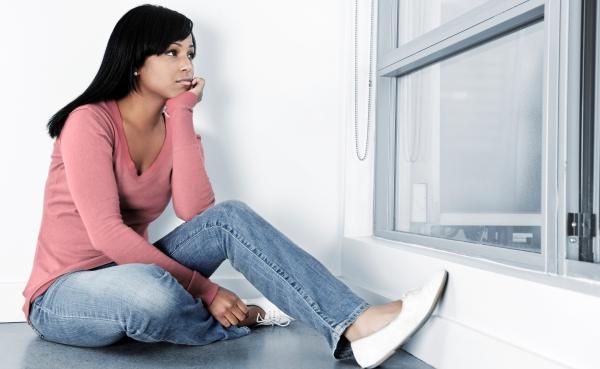Sufferers of Vaginal Pain Rarely Seek Treatment

Chronic pain at the opening of the vagina, known as vulvodynia, is common among women, yet many do not seek treatment for the condition, a new study says.
The results show about 8 percent of women surveyed had symptoms of vulvodynia. And about 25 percent had experienced vulvodynia at some point in their lives. The study was done in southeastern Michigan, but it is likely the condition is as common nationally, said study researcher Dr. Barbara Reed, a professor of family medicine at the University of Michigan Medical School. Recent studies in other communities have found similar results, Reed said. Only about half of the women who had vulvodynia sought treatment for it, despite experiencing pain for an average of nearly 12-and-a-half years, the study showed. Vulvodynia can make sex, and even sitting for long periods, extremely painful. Some women may not seek treatment because they think such pain is normal. "A lot of women think this is just [how] they are, and that it's as to be expected and nothing can be done," Reed said. Others may bring it up to a physician, but are told they look normal so they should relax more during sex, Reed said. Few studies have looked at the effectiveness of treatments for vulvodynia, but Reed has seen many patients respond well to therapy. "I'm very optimistic that they're situation can be vastly improved," with treatment, she said. Chronic pain Vulvodynia can be provoked through activities including intercourse and tampon use, or it can be spontaneous. Pain varies among patients, from an irritating or burning sensation, to sharp to knifelike pain. The cause is unknown. Reed and colleagues surveyed 2,269 women in the Detroit area between 2008 and 2009. The researchers called the participants and asked them questions that had previously been shown to diagnose vulvodynia with substantial accuracy, the researchers said. Participants had to have experienced pain for at least three months to count as likely having the condition. Around 200 women met the criteria for vulvodynia. The average age of onset was 30. The condition was about as common among women aged 18 to 70, after which the prevalence declined. Experiencing vulvodynia often did not prevent women from having sex. Previous estimates had suggested that somewhere between 3 percent and 14 percent of women have vulvodynia; the aim of the new study was to find the condition's prevalence among women in the region with more precision. Misdiagnosis? Of all the women who had vulvodynia, only 2 percent had actually been diagnosed with the condition outside of the study. Moreover, only a quarter of those who sought treatment for their pain were given any diagnosis at all.Some were diagnosed with yeast infections or estrogen deficiency, and while both these conditions can cause vaginal pain, the researchers suspect some women instead had vulvodynia. Women who talked to a doctor about their pain were no more likely to see their symptoms resolve than those who did not see a doctor, which suggests the treatments the doctors are prescribing often aren't working, the researchers said. "If they don’t get better when you treat those diagnoses, you have to suspect something else is going on," Reed said. Reed said she does not think many doctors are familiar with diagnosing and treating vulvodynia. Treatments included tricyclic antidepressants (to treat nerve pain), selective serotonin reuptake inhibitors (SSRIs), medications for seizures, and in some cases, surgery, Reed said. Reed said the researchers will next investigate what factors are associated with developing vulvodynia, and with having symptoms resolve. Pass it on: About 8 percent of women have vulvodynia, but many do not seek treatment.
This story was provided by MyHealthNewsDaily, a sister site to LiveScience. Follow MyHealthNewsDaily staff writer Rachael Rettner on Twitter @RachaelRettner. Find us on Facebook.
Sign up for the Live Science daily newsletter now
Get the world’s most fascinating discoveries delivered straight to your inbox.

Rachael is a Live Science contributor, and was a former channel editor and senior writer for Live Science between 2010 and 2022. She has a master's degree in journalism from New York University's Science, Health and Environmental Reporting Program. She also holds a B.S. in molecular biology and an M.S. in biology from the University of California, San Diego. Her work has appeared in Scienceline, The Washington Post and Scientific American.










